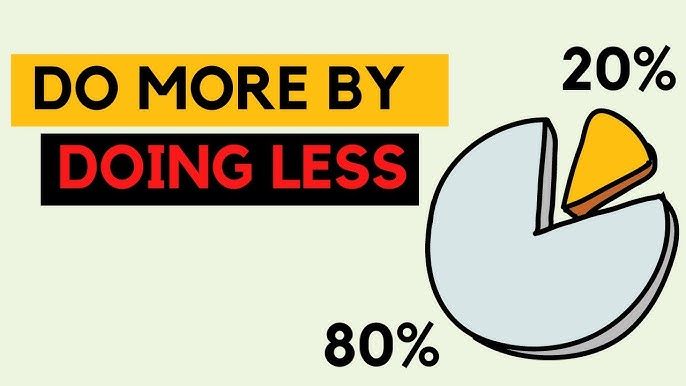

Time management is crucial in today’s fast-paced world, where productivity and efficiency determine success. Understanding and implementing the 80/20 rule, also known as the Pareto Principle, can revolutionize how we approach tasks and achieve results. Let’s learn more about this topic below with Snake Game.
The Pareto Principle states that roughly 80% of effects come from 20% of causes. Italian economist Vilfredo Pareto first observed this phenomenon in 1896 when he noticed that 80% of Italy’s land was owned by 20% of the population. This observation sparked a revolutionary understanding of distribution patterns that apply to various aspects of life, business, and personal productivity.
In the context of time management, this principle suggests that 80% of our results come from 20% of our efforts. This means that not all tasks are created equal – some activities yield significantly higher returns than others. Understanding this concept is crucial for maximizing productivity and achieving better results with less effort.
Read more: Top 5 Time Management Apps for Students in 2025
The first step in applying the 80/20 rule is identifying which activities fall into the crucial 20% that generate the most significant results. Start by analyzing your daily tasks and their outcomes. Keep a detailed log of your activities for a week or two, noting the time spent on each task and the results achieved. This exercise will help you identify patterns and determine which activities deliver the most value.
Consider both quantitative and qualitative measures when evaluating your activities. In a professional context, this might mean looking at revenue generated, client satisfaction, or project completion rates. In personal life, it could involve measuring progress toward goals, relationship improvements, or personal growth achievements.
Once you’ve identified your high-impact activities, the next step is recognizing and eliminating time wasters – the activities that fall into the less productive 80%. These might include excessive social media use, unproductive meetings, or perfectionism in low-priority tasks. The goal isn’t to eliminate all these activities but to reduce their impact on your productive time.
Create boundaries and systems to minimize these distractions. This might involve setting specific times for checking emails, implementing a “two-minute rule” for quick tasks, or using productivity apps to block distracting websites during focus periods. Remember, it’s not about working more hours but making the hours you work more effective.
Time blocking is a powerful technique that aligns perfectly with the 80/20 principle. Dedicate specific time blocks to your high-impact activities when your energy and focus are at their peak. This might mean scheduling your most important work during your morning hours if you’re a morning person, or structuring your day to accommodate your natural productivity rhythms.
Use the Pomodoro Technique within your time blocks to maintain focus and prevent burnout. Work in focused 25-minute intervals followed by short breaks. This method helps maintain high productivity levels while ensuring sustainable work patterns throughout the day.
Modern technology offers numerous tools to help implement the 80/20 rule effectively. Project management software, time-tracking apps, and productivity platforms can help you identify patterns in your work and optimize your schedule. Choose tools that align with your working style and don’t require excessive time to maintain.
Consider using automation tools for repetitive tasks that don’t require human judgment. This could include email filters, social media scheduling, or template responses for common inquiries. Automation frees up time for high-impact activities while ensuring necessary but routine tasks are still completed.
The 80/20 rule isn’t just about time management – it’s also a powerful framework for decision-making. When faced with multiple options or projects, ask yourself which choices will generate the most significant results. This might mean focusing on your biggest clients, most profitable products, or most influential relationships.
Learn to say no to opportunities that don’t align with your high-impact goals. Every yes to a low-impact activity is a no to something potentially more important. Develop clear criteria for evaluating opportunities based on their potential return on investment of time and effort.
Read more: How to Manage Your Time Effectively at Work
Successful implementation of the 80/20 rule requires developing sustainable habits that support long-term productivity. Start by creating morning and evening routines that prepare you for focused work. This might include planning your day the night before, maintaining a healthy sleep schedule, and regular exercise to maintain energy levels.
Regular review and adjustment of your systems is crucial. Set aside time weekly or monthly to evaluate your progress and adjust your approach as needed. This ensures your productivity system remains effective and aligned with your changing goals and circumstances.
Implementing the 80/20 rule isn’t without its challenges. Common obstacles include resistance from colleagues who don’t understand your new approach, difficulty identifying truly high-impact activities, and the temptation to fall back into old habits. Address these challenges by communicating clearly about your methods, regularly reviewing and adjusting your system, and maintaining accountability through mentors or productivity partners.
Remember that perfection isn’t the goal – progress is. Start with small changes and gradually build up to more significant adjustments as you become comfortable with the new approach. Celebrate small wins and learn from setbacks rather than becoming discouraged by them.
The 80/20 rule offers a powerful framework for achieving more while doing less. By focusing on high-impact activities, eliminating time wasters, and building sustainable systems, you can dramatically improve your productivity and effectiveness. The key is to start small, remain consistent, and regularly adjust your approach based on results. Remember, the goal isn’t to work more but to work smarter, focusing your energy where it matters most.
As you implement these principles, you’ll likely find that not only does your productivity improve, but your stress levels decrease and your satisfaction with work increases. The 80/20 rule isn’t just about efficiency – it’s about creating a more balanced and fulfilling approach to work and life.